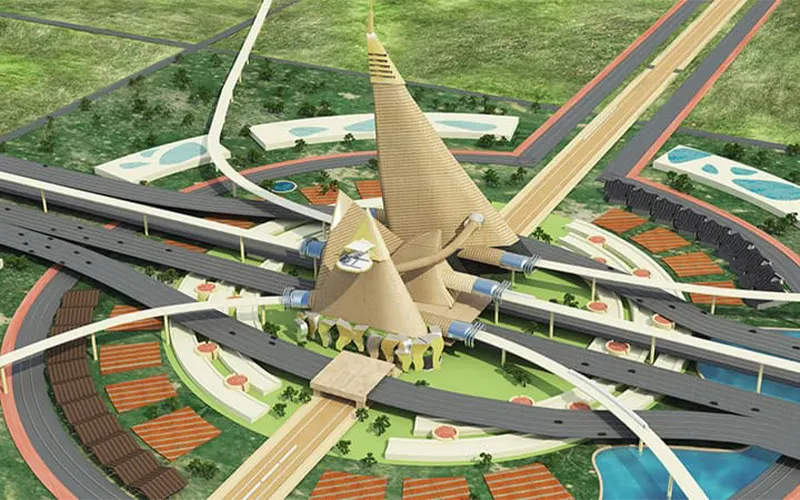
Delhi Mumbai Industrial Corridor Project: Transforming India’s Future
When you hear about futuristic projects shaping India’s economy, one name you’ll always come across is the Delhi Mumbai Industrial Corridor Project (DMIC). This mega-infrastructure initiative is more than just a road or rail project; it’s a visionary blueprint to reshape how business, trade, and industry function across the country. Stretching nearly 1,500 kilometers, the DMIC is designed to connect India’s two biggest commercial hubs — Delhi and Mumbai — while developing smart industrial cities along the way.
But what does this mean for investors, industries, and everyday people? Let’s dive in.
The Vision Behind DMIC
India has always been a hub for trade, but outdated logistics and uneven infrastructure often slowed growth. The Delhi Mumbai Industrial Corridor Project was conceived as a game-changer. Backed by the Government of India and supported by international partners like Japan, the vision was clear: create a high-tech industrial belt equipped with world-class connectivity, modern logistics, and sustainable infrastructure.
The idea isn’t just to build faster roads but to develop an entire ecosystem — a network of industrial hubs, logistics parks, manufacturing zones, and Greenfield smart cities. These developments are aimed at boosting exports, creating jobs, and putting India at the forefront of global manufacturing.
Key Features of the Delhi Mumbai Industrial Corridor Project
- World-Class Connectivity
The corridor integrates high-speed expressways, dedicated freight rail lines, and access to major ports. This drastically cuts the time and cost of transporting goods between Delhi, Mumbai, and beyond. - Smart Industrial Cities
Cities like Dholera in Gujarat, Shendra–Bidkin in Maharashtra, and others are part of the DMIC. These are not just industrial parks but Greenfield smart cities, planned with underground utilities, high-speed internet, renewable energy, and modern living spaces. - Boost to Manufacturing
DMIC aims to make India a global manufacturing hub. By providing industries with plug-and-play infrastructure, companies can set up quickly and scale efficiently. - Sustainability Focus
Unlike older industrial projects, DMIC integrates renewable energy, green zones, and efficient water management to ensure growth does not come at the cost of the environment.
Dholera: The Flagship City of DMIC
One of the brightest stars of the Delhi Mumbai Industrial Corridor Project is Dholera Smart City in Gujarat. Spanning over 920 sq km, Dholera is India’s first and largest planned Greenfield smart city. With a dedicated freight corridor, metro connectivity, six town planning schemes, and its own international airport, Dholera is poised to be the industrial and residential hub of the future.
For investors, this means more than just plots of land — it’s about being part of a city designed with a 100-year vision. No messy wires, no waterlogging, no outdated systems. Instead, Dholera offers an environment where industries and residents thrive together.
Economic Impact of DMIC
The numbers behind DMIC are staggering. Once fully operational, the project is expected to:
- Create millions of jobs across industries.
- Contribute significantly to India’s GDP.
- Boost exports by giving faster access to ports.
- Attract massive domestic and foreign investment.
The corridor also reduces logistics costs, making Indian goods more competitive in global markets. For everyday people, this translates to more employment opportunities, better infrastructure, and improved quality of life in the cities along the corridor.
Why DMIC Matters for Investors
If you’re looking at the bigger picture, the Delhi Mumbai Industrial Corridor Project isn’t just an infrastructure plan — it’s an opportunity for wealth creation. Early investors in regions under DMIC development are already seeing land values rise. Cities like Dholera, for instance, have become hotspots for both industrial and residential investment.
The benefits for investors include:
- Government-backed development ensuring security.
- Transparent planning and approvals.
- Early-mover advantage in high-growth zones.
- Long-term appreciation of land and property values.
For industries, DMIC ensures faster supply chains, access to skilled labor, and the infrastructure needed to operate at global standards.
Challenges and Progress
No mega project comes without challenges. Land acquisition, funding, and coordination between multiple states have slowed certain parts of DMIC. However, the project has been making steady progress, with several nodes already operational and attracting investment.
Despite delays, the government’s commitment to DMIC remains strong. Each phase completed brings India closer to realizing the dream of a globally competitive industrial economy.
DMIC and India’s Future
The Delhi Mumbai Industrial Corridor Project is not just about connecting two cities. It’s about transforming India’s economic backbone. By creating a seamless flow of goods, people, and services, DMIC will set the stage for India’s next phase of growth.
For entrepreneurs, it means new opportunities to set up industries. For job seekers, it promises millions of employment opportunities. And for investors, it’s a chance to be part of one of the most ambitious infrastructure stories of the 21st century.
The Delhi Mumbai Industrial Corridor Project is more than just a highway or freight line. It’s a bold statement that India is ready to compete on the global stage with modern infrastructure, smart cities, and a robust industrial backbone.
Whether you’re a business owner looking to expand, an investor scouting for high-growth opportunities, or someone curious about India’s development story, DMIC is a project you can’t ignore. It is shaping not just how industries will work but how millions of people will live, work, and thrive in the decades to come.
If the past was about unplanned growth, the future is about vision — and DMIC is at the heart of that vision.
